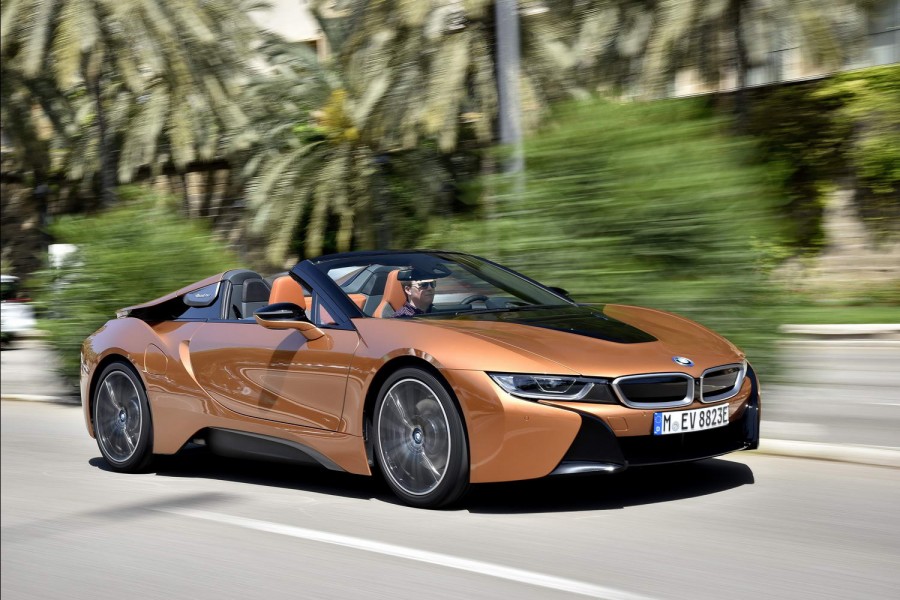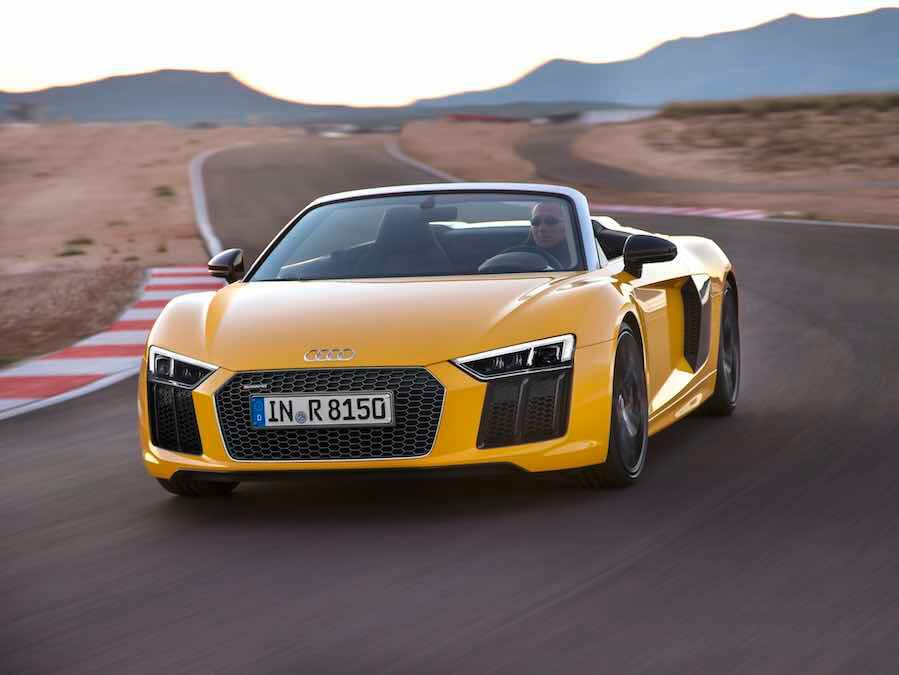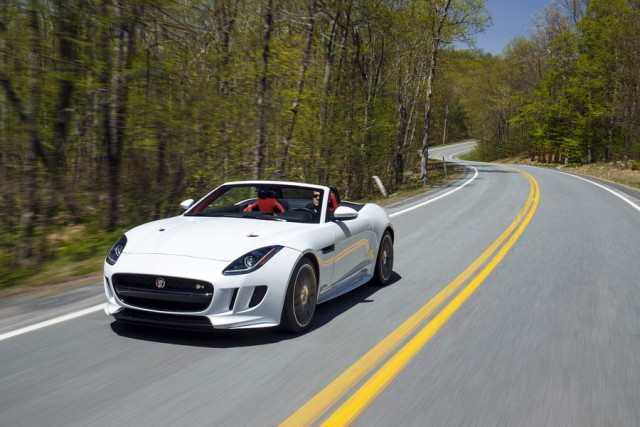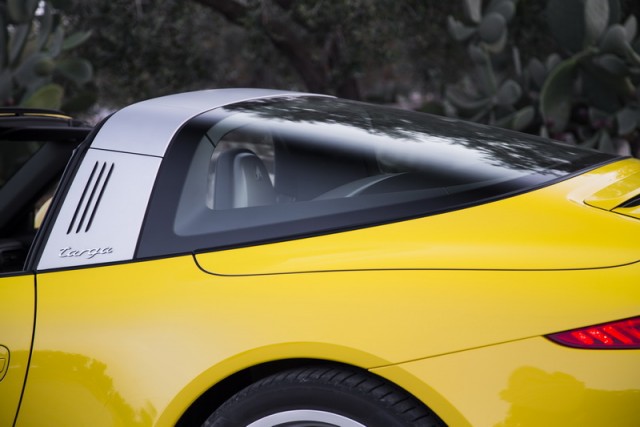BMW has updated its i8 hybrid sports car with worthwhile chassis and powertrain upgrades, but the big news is the introduction of a new open-topped model, the i8 Roadster. It comes with very few compromises and serves to emphasise how special a car the i8 is. Even in Ireland, it may well be the choice of the range.
In the metal
Unsurprisingly, the BMW i8's looks haven't been altered all that much for the mid-life update. The hybrid coupe has dropped jaws since its 2014 introduction thanks to futuristic concept car design and it looks as fresh today as it did then. For 2018, there are new colours and wheels to choose from, as you'd expect. The new i8 Roadster carries over most of the coupe's appearance, though a surprising amount of it is new, if not all that obvious at first glance. It was discovered, for example, that the hot air exiting the vent on the bonnet made its way into the cabin when the roof was first taken off the i8, so it is now ducted elsewhere, necessitating changes to the floor of the i8 - changes that apply to both Coupe and Roadster.
That super-low windscreen is stronger in the Roadster and though its rear buttresses look to be of similar shape to the rear of the i8 Coupe (just without windows), they're much lower and there's no big glass hatch behind. Instead, the dramatic light design at the back is emphasised and there's large new 'Roadster' script on grey panels. Between the rear buttresses is a wind deflecting window that can be raised or lowered independently of the roof. The fabric top, incidentally, takes just 15 seconds to electrically hide away under the rear, and that can be done at speeds of up to 50km/h - or by holding down the button on the key fob when standing next to the car. The Roadster's doors are new too, without frames for the glass, though they retain the Coupe's theatrical gullwing movement. Thanks to all these changes, and some additional structural stiffening, the Roadster weighs 60kg more than the Coupe.
The new i8 Roadster does without the two rear seats of the Coupe (not that they're much good for anything other than carrying luggage), but otherwise the cabin is virtually identical. For the facelift, there are new trim options and a new infotainment screen using BMW's latest software and menu system. It's sharper looking than before, but its position is the same, so the fact that it's now a touchscreen is of no benefit, as it's too far out of easy reach. Thankfully, the centre console mounted iDrive rotary controller remains and it's a cinch to use on the move.
Driving it
Roof up, the i8 Roadster is virtually as refined as the i8 Coupe with no discernible shudder and shake through the structure. At higher speeds, there is more noise as the air rushes over the fabric top, but it's not massively intrusive. The next step towards fully open motoring in the i8 is lowering the two side windows and that behind. This allows a remarkable amount of airflow through the cabin, but not so much that it feels uncomfortable and loud. With the roof folded away, it's also quite calm in the cabin with all three windows retracted, up to speeds of about 120km/h in any case. Those with long hair might reach for the button to raise the rear window a little earlier than that, but this is a car you'll certainly maximise roof-down time in.
And that brings some surprising benefits. At low speed, when the car is running in purely electric mode, it's even more obvious in the Roadster than it is in the Coupe, as there's no engine noise, just the faint whirring of the electric motor up front and the burr of the tyres on the road surface. This makes the i8 feel even more special somehow. As before, there are Comfort and Eco Pro driving modes to select, whether the car is in its default hybrid mode or you've pressed the 'eDrive' button to maximise electric running. BMW has upgraded the i8's battery pack so it packs a higher energy capacity into the same space as before. This means a considerably longer all-electric range (up to 53 kilometres in the Roadster with a fully-charged battery) and, in conjunction with a more powerful motor, the ability to drive at higher speeds (up to 120km/h) without using the petrol engine. The latter has been tweaked slightly, with the addition of a particulate filter, for example, but its power output remains pegged at 231hp.
The engine cuts in as needs be in regular use, but, if you're on an interesting piece of road, you'll find it's more satisfying to slot the gear lever to the left for Sport mode. This isn't only for the six-speed automatic gearbox (which responds keenly to the paddles behind the steering wheel), but also for throttle response, engine noise and the suspension. The engine is a turbocharged 1.5-litre unit, with just three cylinders, yet it sounds far more exotic and, thanks to the assistance of the electric motor on the front axle, it accelerates the car with real conviction. Response to the throttle in Sport mode is quick. At the same time as the introduction of the Roadster, BMW tweaked the chassis of all i8s, specifically focusing on the power steering, damping and stability control. The result is a more engaging car to drive quickly than before with a distinctly rear-led stance on the exit of tight corners. The quick steering and front end of the car are more accurate and dependable than before, too, with better control of car body movements over certain bumps. While the i8 is rapid by any measure, don't expect the on-the-limit madness of something like a BMW M4 (after all, the i8 still uses four-wheel drive to effectively get its power down), but it's certainly a more satisfying car to drive than it was, feeling more interactive rather than inert.
What you get for your money
I don't think that the price difference between the i8 Roadster and Coupe (about €17k before options) will be the deciding point for buyers and indeed, those with the means to purchase a BMW i8 are unlikely to be overly concerned with the purchase cost, but there's no doubt that it's an expensive car. Still, there's nothing at all like it on the market, marrying real efficiency with eye-popping styling and a sporty driving experience. It's also well-equipped as standard, though you'll be tempted to dip into the options list to personalise it.
Summary
Sensibly, BMW hasn't radically altered the i8 recipe. It remains a unique blend of sportiness and efficiency on the market, not to mention its dramatic styling. The i8 Roadster enhances the range, giving owners of the current Coupe a reason to change and appealing further to those that put appearance first. In Ireland, it will remain a rare car, naturally, but as a halo model for BMW's electric future, its significance should not be underestimated.























































































































